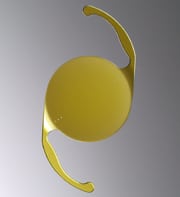Cataract Surgery in Bronx, NY
While a comprehensive eye examination by an eye care practitioner can determine the presence of a cataract,
there are a number of signs and symptoms which may indicate a cataract:
- Blurred or hazy vision where colors may seem yellowed
- A tendency to become more nearsighted
- A gradual loss of color vision
- The feeling of having a film over the eyes
- An increased sensitivity to glare, especially at night
New Technology in Cataract Surgery
We perform a minimally invasive, no-stitch cataract surgery. The patient is given anesthesia to numb the eye. A tiny incision (2.75 mm or less) is made into the eye and a small ultrasonic probe is inserted. This probe breaks the cloudy lens into tiny pieces and gently removes those pieces out of the eye.
Cataract Lenses
There are a wide range of replacement lenses available to cataract patients, each offering different advantages for your post-surgical vision. The most effective lens implant depends on each patient’s individual preferences and goals for their vision. The latest lens implants help eliminate the need for glasses or contacts after cataract surgery, providing convenient, effective results for your specific visual conditions.
Multifocal IOLs
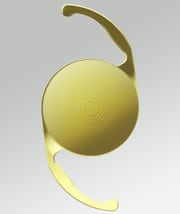
Toric IOLs
Toric IOLs are specifically designed for patients with astigmatism. In the past, patients with astigmatism would need eyeglasses or contact lenses even after cataract surgery as the basic lens implants did not correct for astigmatic refractive error. Toric IOLs, such as AcrySof Toric ®, corrects cataracts and astigmatism with just one lens and provides a more convenient and affordable solution.
Vivity
Clareon Vivity is an EDOF IOL (Extended Depth of Focus intraocular lens), the first and only non-diffractive presbyopia-mitigating IOL with exceptional clarity. It is designed to provide a continuous range of vision from near to intermediate with functional near vision, reducing the need for glasses or contact lenses after cataract surgery. It enables the individual to see things more clearly from a distance, such as when typing on a computer. It is also effective for enhancing viewing of close-up activities such as reading or shaving.
Vivity IOLs provide a single point of focus. The wavefront-shaping lens allows light into the eye through this focal point. It focuses the light on the back of the eye more accurately, creating sharper images across multiple focusing distances.
It is a good option for individuals who:
- Want to reduce their dependence on glasses or contacts
- Have realistic expectations about completely eliminating the need for glasses or contacts
- Are amenable to paying some of the cost out-of-pocket since the advanced lenses are more expensive than standard monofocal intraocular lenses.
In a clinical study, 106 patients were asked about their experience with the Vivity Lens:
- Over 90% reported they were satisfied with their near vision
- 94% of patients reported rarely or never needing eyeglasses or contacts at a distance.
Panoptix
Clareon Vivity is an EDOF IOL (Extended Depth of Focus intraocular lens), the first and only non-diffractive presbyopia-mitigating IOL with exceptional clarity. It is designed to provide a continuous range of vision from near to intermediate with functional near vision, reducing the need for glasses or contact lenses after cataract surgery. It enables the individual to see things more clearly from a distance, such as when typing on a computer. It is also effective for enhancing viewing of close-up activities such as reading or shaving.
Vivity IOLs provide a single point of focus. The wavefront-shaping lens allows light into the eye through this focal point. It focuses the light on the back of the eye more accurately, creating sharper images across multiple focusing distances.
It is a good option for individuals who:
- Want to reduce their dependence on glasses or contacts
- Have realistic expectations about completely eliminating the need for glasses or contacts
- Are amenable to paying some of the cost out-of-pocket since the advanced lenses are more expensive than standard monofocal intraocular lenses.
In a clinical study, 106 patients were asked about their experience with the Vivity Lens:
- Over 90% reported they were satisfied with their near vision
- 94% of patients reported rarely or never needing eyeglasses or contacts at a distance.
Click here to hear about patient stories
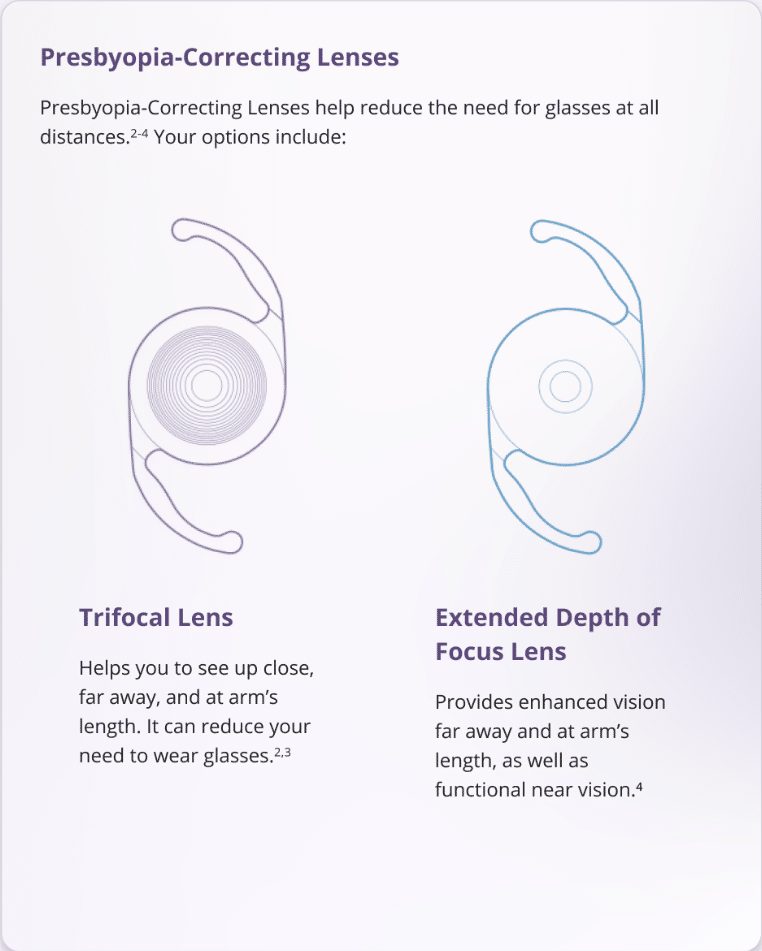
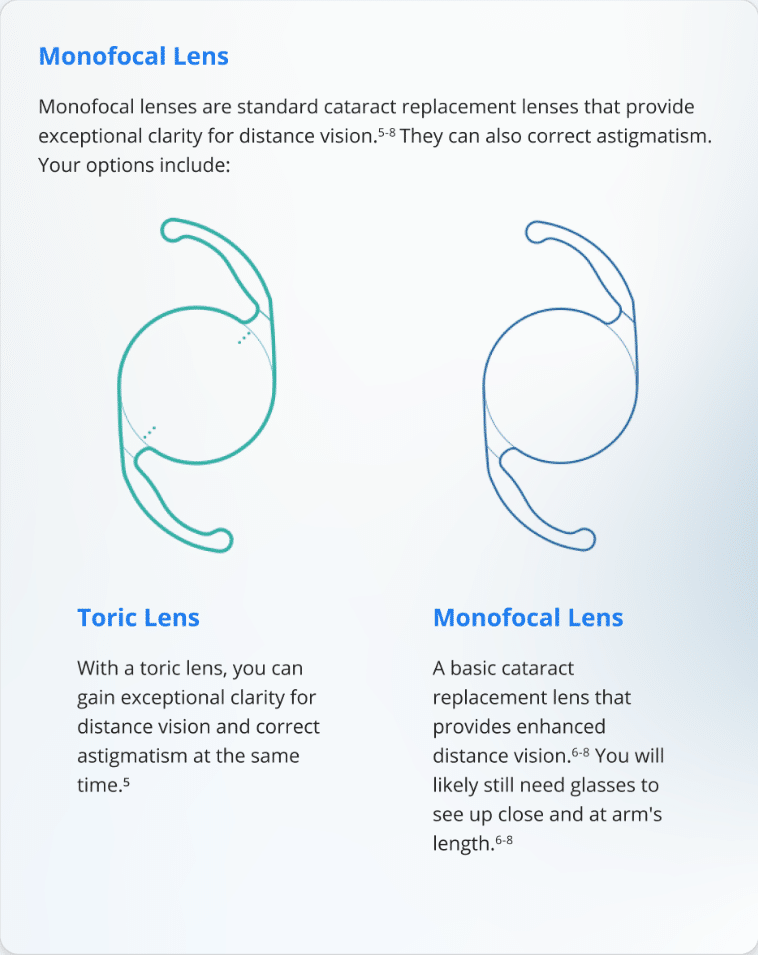
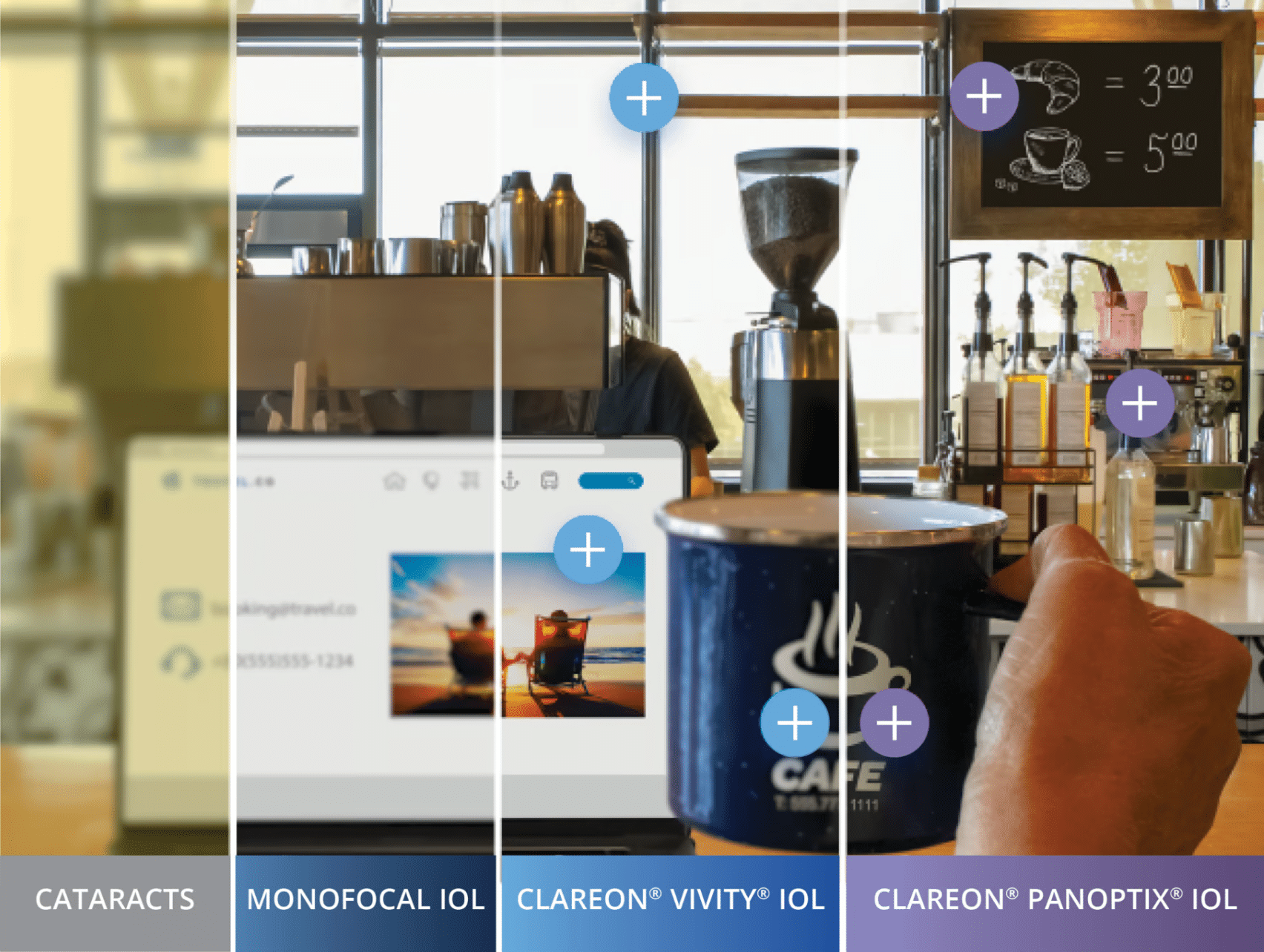
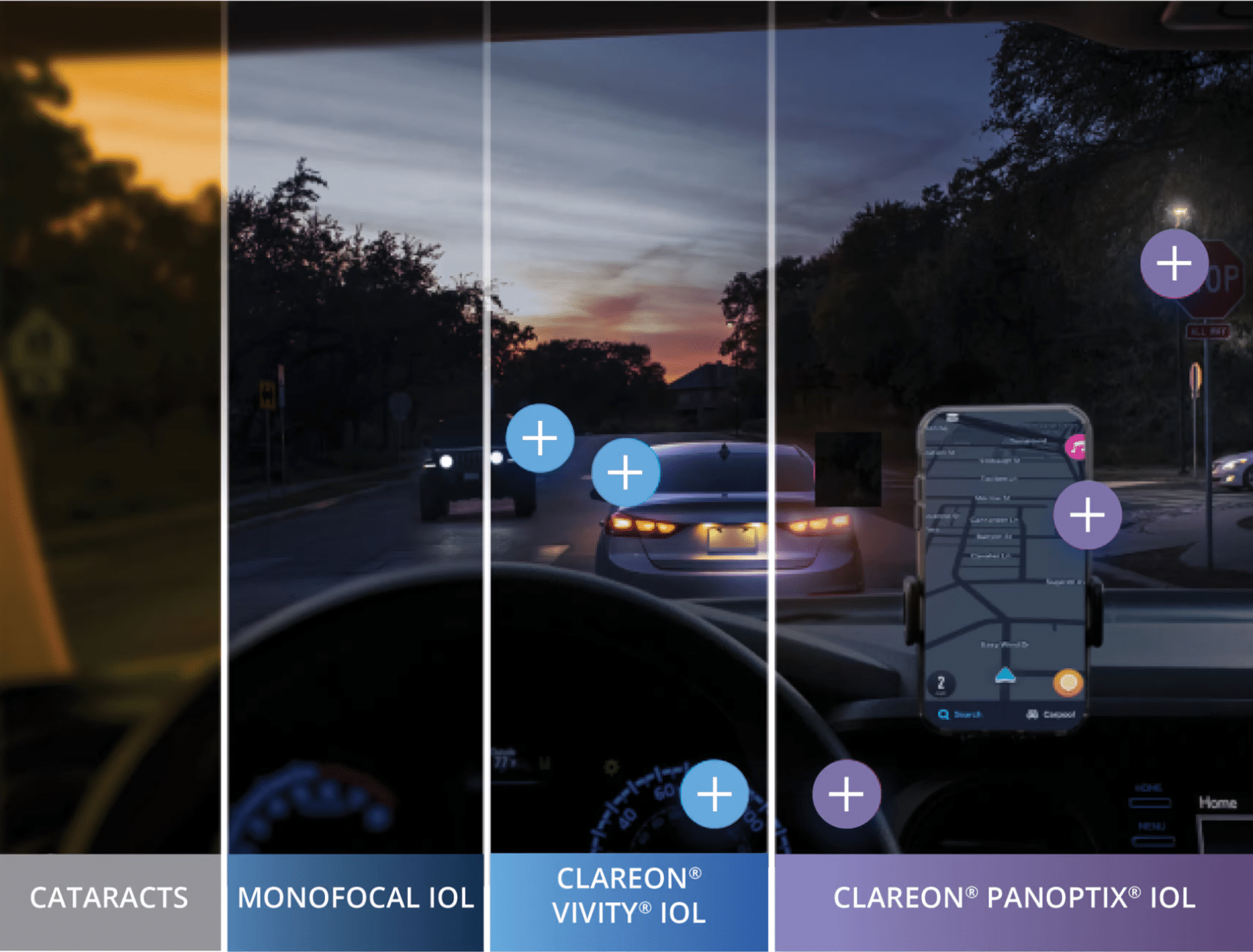
LenSx® Laser System
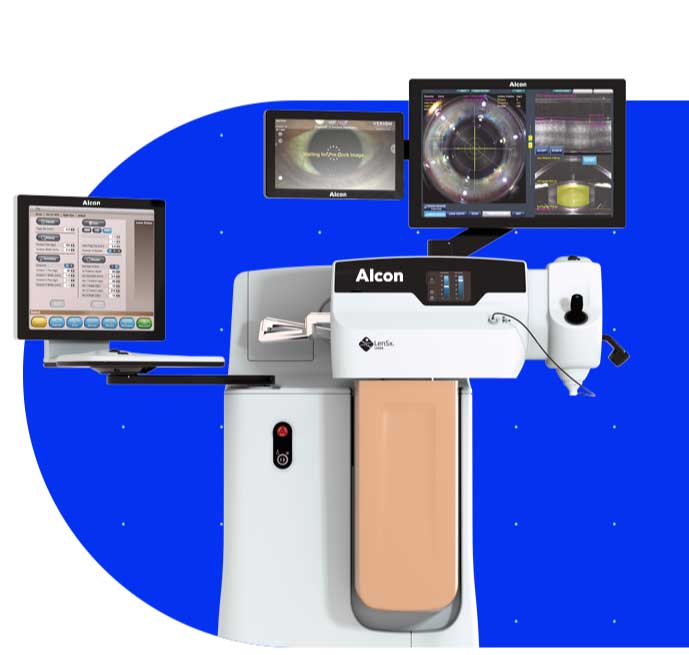
Bring proven precision and safety to every cataract procedure with the LenSx® Laser, featuring ASCEND™ Technology — the market leading femtosecond platform.
ORA System
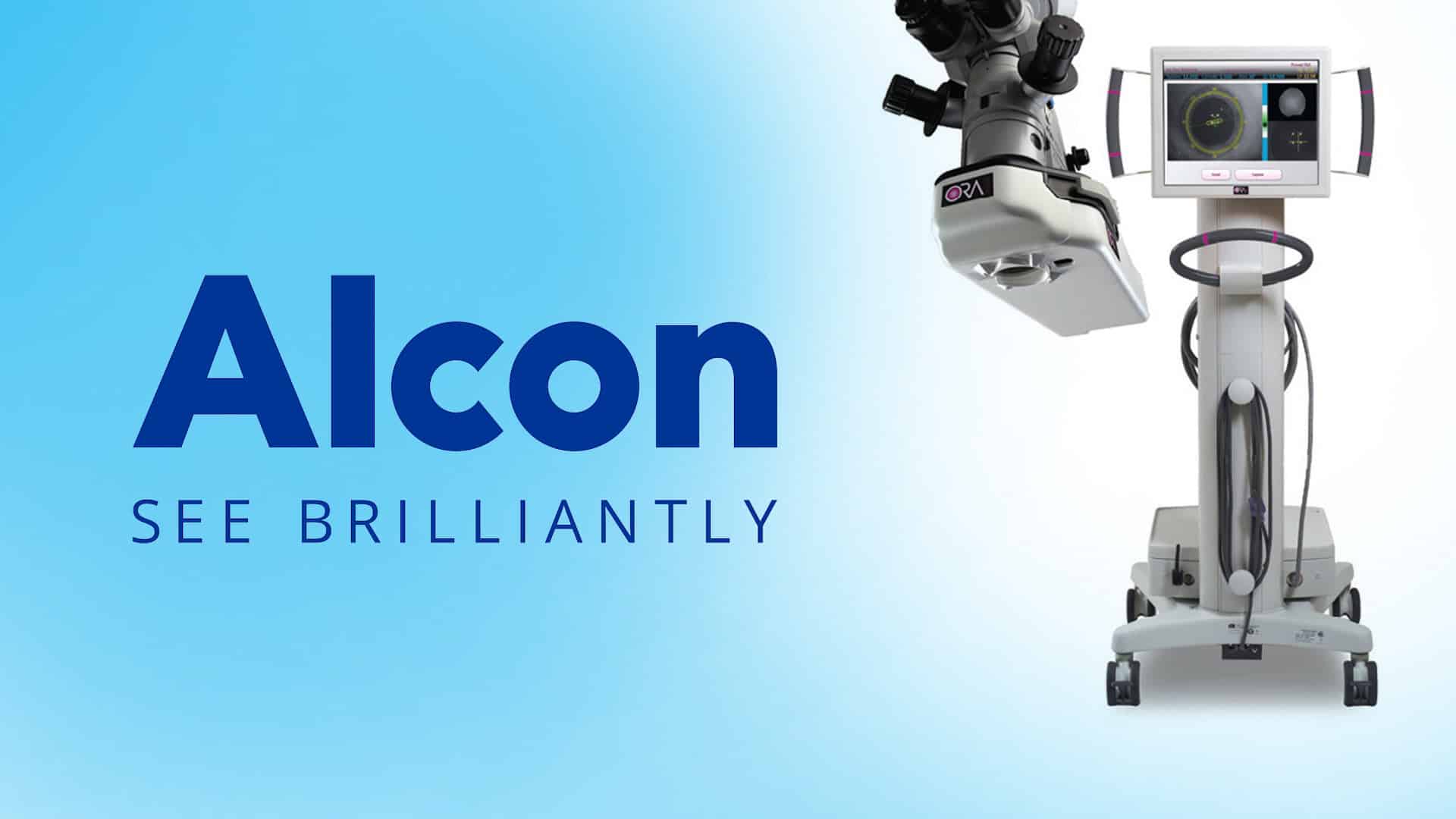
The ORA SYSTEM is the first and only database for real-time IOL calculations and in-procedure adjustments during surgery.
References
Alcon images, accessed 28 November 2023,< https://www.myalcon.com/cataracts/clareon-iols >




